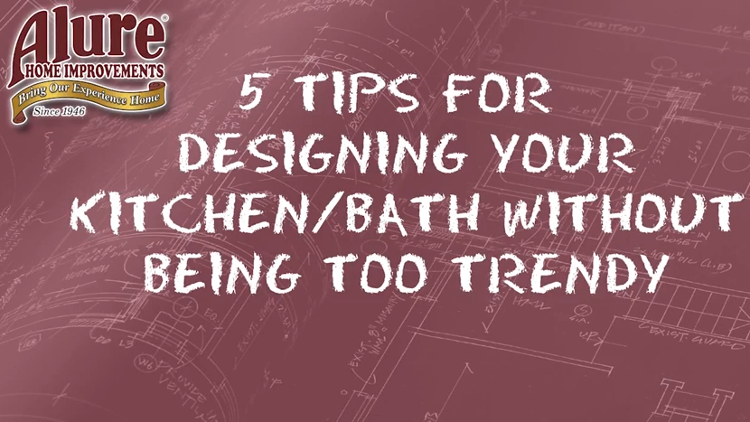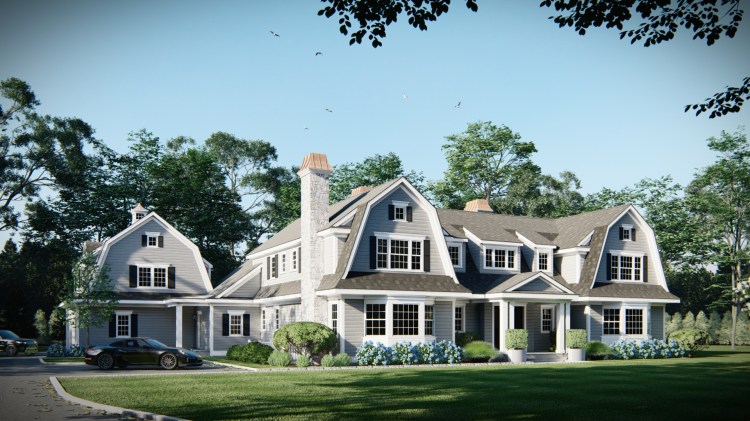Sponsored Content by Alure Home Improvements
Mary Lotardo, custom kitchen and bathroom designer at Alure Home Improvements, offers her five tips for designing your kitchen and bathroom without being too trendy in a recent episode of Alure’s My5 Tips Series.
You have to remember that home décor is a lot like fashion. But altering the look of your kitchen or bathroom is not as easy as putting on a new dress or changing your blouse. A classic look should last a while, perhaps as long as a decade. If you follow Mary’s tips, then you can easily give a new twist to the appearance of your kitchen or bathroom by adding a few touches that won’t break the bank but liven up a situation that maybe you’ve grown tired of.
Here’s what she’s talking about:
Tip No. 1: Use neutral colors.
When you’re making your selections for a new color scheme, Mary says, “Try to use neutral colors for the large items in the room.”
She suggests that in particular you use neutral colors for your kitchen cabinets or the bathroom vanity.
“If you’re doing full-tile walls, you might want to pick a neutral color and then tie it in with some accents along the way,” Mary says.
The most popular neutral colors for kitchens and bathrooms are white, beige, gray and sage. These colors make it easy and less expensive to update the overall look of the room because all you need to do to make a difference is just add some new accessories. Another advantage of using neutral colors is that it makes the kitchen or a bathroom look brighter and bigger, depending on the lighting arrangement.
Tip No. 2: Bring in colors that you love.
Mary proposes that you incorporate your favorite colors into the room’s new décor but use them in small touches. Let these hues be seen in your accent tiles, glass pendants, faucets and fixtures. Wait until you see how metal finishes such as brushed nickel, bronze or stainless steel can enhance the space and make it all come alive without becoming too dominant.
“Use them in the room to bring in all the different colors that you love,” suggests Mary.
Tip No. 3: Use natural-looking materials that are timeless.
There are so many more possibilities in natural-looking materials than there used to be, thanks to innovations in technology. For example, Mary suggests using porcelain tiles that emulate limestone, slate or marble.
“Even today quartz is made to look like granite,” says Mary. “And there are some beautiful looks out there with the textures and colors that you love.”
It’s not all about granite and marble, but they are lovely indeed and durable, especially for countertops. Slate has a dull-matte finish that’s not flashy but works well in a neutral-color scheme. Plus slate is harder than marble and easy to keep clean with just soap and water. Soapstone, which comes quarried out of the ground in a natural gray color, has a softer surface than some other materials like granite but with soapstone you can sand away any scratches on the surface. Quartz is one of the most scratch-resistant materials available. It’s a great choice for countertops because it comes in a variety of colors and is easy to maintain.
Click here for more information on Alure Home Improvements
Tip No. 4: Don’t be afraid of bringing in a ‘wow’ factor!
“A lot of times using art deco accents or having a beautiful tile layout, those are the things that you love most in the project when the project is finished,” Mary says knowingly. “So don’t be afraid to try something a little bit different!”
The great thing about using a neutral color scheme as the foundation for your design is that it doesn’t compete with any flourishes you may come up with. In fact, this backdrop encourages you to put something of yourself in the final look. Maybe you’ve got some vases that you treasure or window curtains with a design that delights your eyes. There’s no reason that a neutral-color kitchen or bathroom shouldn’t have as much pizzazz as a room blazing with hot colors.
Tip No. 5: Use a professional designer.
Doesn’t it make sense that when you redo a room like the kitchen or the bathroom, which get a lot of daily use, you want the best advice possible for the final creation?
“You need somebody with experience who can take the colors and textures that you love and create a project that you’ll love for a life time,” says Mary.
A professional designer can help you to better articulate what look you’re going for, and find out what appeals to you at a fundamental level. And a designer you trust can help you figure out how to make it all come true within a budget you can afford. Perhaps she’ll suggest soft hues like beige, khaki and rain-cloud gray for a calming atmosphere, or suggest richer neutral colors like chocolate brown or slate gray, or go in a different direction with subtle variations of white on white.
There’s more to the palette of different neutral color schemes than you might think—and consulting a true professional designer, like Mary Lotardo at Alure Home Improvements, can get you inspired.



























